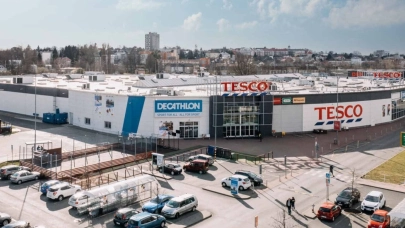
Central European commercial property markets are expected to attract even more investors than last year and the competition among countries is fiercer than ever. What does it take to change lost lasting perceptions and secure interest from international buyers? Andy Thompson MRICS, Director of Investment Services at Colliers International talked to us in Bratislava about recent developments on the Czech and Slovakian markets.
How are the Czech and the Slovak property markets doing in the race to attract investors?
I think that the Czech market has always been strong and it’s additionally benefiting from the challenges in Poland. The bit of uncertainty created by the Polish government and the oversupply of office stock in Warsaw has encouraged new and existing investors in the region to look at other markets. Slovakia on the other hand has always had a challenge in terms of getting investors to look at it. I’ve been trying for several years to get investors who have bought in the Czech Republic to look at Slovakia and it’s been difficult. But things are really changing now. There are new buyers like Lonestar, Macquarie and Allianz who have not bought before in Slovakia and there are some others behind them who are looking and want to buy. We have seen a few new entries in the last couple of years but this kind of wave truly represents a turning point for the Slovakian market. Buyers are coming from different regions via different routes and for the first time ever there’s real demand for all types of products.
What are the most popular investment products?
There is demand across all sectors. Demand for industrial has increased, but the lack of product is a big problem, although to a lesser extent than in the Czech Republic. And it’s not just the operators; there are some other pure investors who would like to get into industrial. There are a number of parties who want to buy Bratislava retail but there’s really nothing to sell. The regional markets are interesting however. Investors typically prefer the number one schemes in the city, but there is also demand for secondary assets. As for offices it’s mostly Bratislava and to some extent Kosice which I think represents good value for money for investors looking for a longer term opportunity. Patterns are really similar in the Czech Republic, but the market is deeper and wider.
It’s often being said that Slovakia is too small and too illiquid to be an attractive choice for investors looking to get into the CEE region. Do you think that this perception is changing and what do you think can be done in order to change it?
In my opinion there are three things that can change this perception. The first is having more international buyers in the market and that’s happening. Investors follow other investors so having these transactions completed will attract more press and more investor interest. The second challenge that Bratislava has had, and it hasn’t gone away, is that its office development market is run by three local players. I think international investors would prefer that there were other developers and ideally international developers here. Some international developers looked, but limited stock has been developed by them. Hopefully that will change. At least in the last couple of years, some other Slovak developers have started to develop in the market so that is a good start. The third part is the transparency of the market which I think has become more attractive for international investors. It’s improved with new transactions, with international interest and with agents being much more involved, active and the maturity is definitely coming.
Do you think that in the longer run there is a room for more investors and developers in secondary Slovakian cities?
I had a very interesting discussion with a recruitment company a couple of days ago about this topic. Retail happens anywhere, right? If there is a catchment area and the occupancy-cost ratios are attractive, shopping centers work. Then it’s an investment product and there are buyers for that investment product. Industrial is mostly focused around Bratislava but there’s also institutional interest outside Bratislava, so that’s moving in that direction. So for retail and industrial, the supply and demand is in place. For offices the challenge is more of an HR challenge. The BPOs and the SSCs that are driving the demand for office space could be attracted to the regional markets, but they need to then make sure that they have the right caliber of people coming out of the universities to staff these centers. And that means language skills. In lots of regional cities in the Czech Republic and Slovakia these occupiers can’t get the language skills from the undergraduates and in many cases not even from the graduates. That is the limitation across the region and that is why Budapest, Bratislava and Prague are so dominant in this market. Kosice is maybe an atypical example because, like Brno, it has a very strong technical university and a lot of the occupiers who are growing there are from the IT sector. Outsourcing is also helped by international flights: if you are a regional city and no one can get there, then it’s difficult for you to have a case to present to Paris or London and say that you want to have a shared service center there.
How do you think yields will change over the next 12 months?
It’s difficult because you always compare the current situation with what happened at the height of the last boom, but bond yields were very different then. I don’t think that there’s much more compression to go in the Czech Republic although it’s really dictated by the weight of money and where else you can get yield. In Slovakia there’s definitely yield compression, there’s no reason why there should be a 200 bps difference between an office building in here and an office building in Prague. I don’t think there is much of a difference in country risk rating, it’s only about liquidity and in some of these markets there are less and less differences in liquidity.
What are your expectations for 2016 investment volumes?
Looking at what’s under offer or close to being under offer I think that the final numbers will be 400-500 million euros for Slovakia and 2-2.5 billion euros for the Czech Republic. It may come in at substantially above that depending on some major transactions and portfolios but I doubt if it will be much less.



